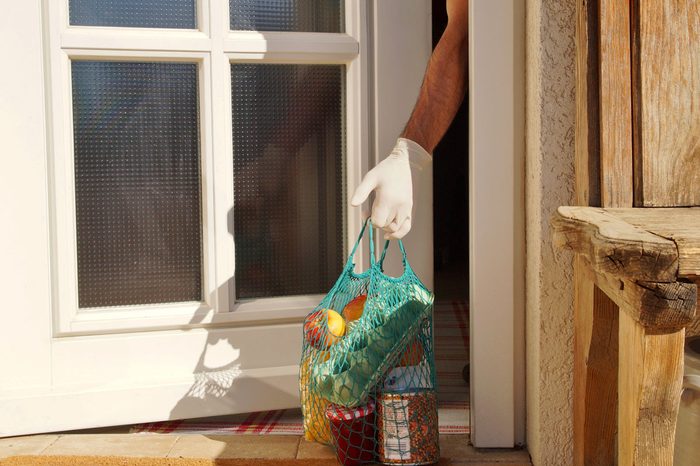
What you can do to ease your fears
As coronavirus continues to spread, most of the country is on lockdown with shelter-in-place mandates except to run necessary errands, such as grocery shopping. But even this once simple task is loaded with fear and uncertainty surrounding Covid-19 transmission.
If you’re running low on food, you should see if you can shop online or even do curbside pick-up from your local supermarket. This will eliminate a great deal of contact with others, according to the Centers for Disease Control and Prevention (CDC). However, these services may be more expensive than simply going to the supermarket.
If this is not feasible, and you need to head out for groceries, can you shop safely during this pandemic? If so, how? Yes, you can if you take certain precautions.
We spoke with health experts who share their tips about how to shop safely for groceries, and what you can do to ease your fears of Covid-19 transmission at the supermarket.
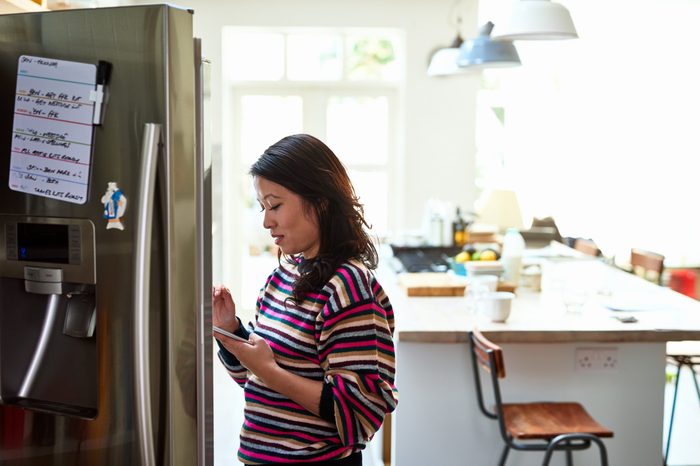
Plan ahead
Keep a running list of what you need at the supermarket so you can get it all in one shot, says Diane Rigassio Radler, PhD, director for the Institute for Nutrition Interventions at the Rutgers School of Health Professions in Newark, New Jersey. “You don’t want to have to run to the market daily so plan ahead and schedule a trip to the market every week or 10 days.” By the way, this is not an excuse to hoard food or other supplies, she notes.
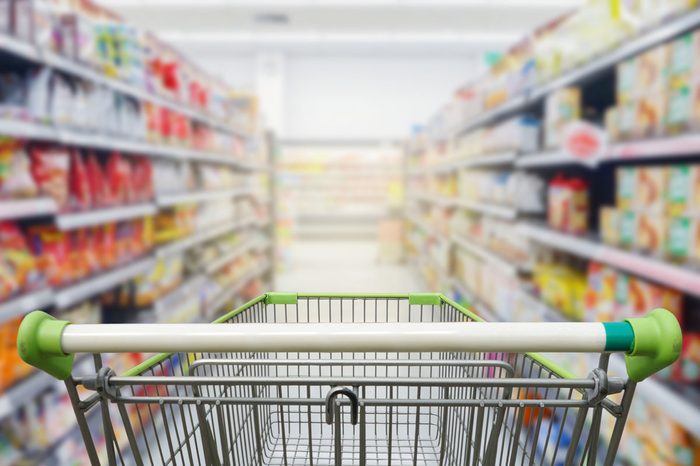
Avoid rush hours to keep your (physical) distance
Try to go to the supermarket during off times when it is less likely to be packed, Radler says. Many grocery stores now have senior shopping hours so that individuals who are considered a greater risk can shop in relative safety. These hours should also be listed on the store’s website. If you’re not sure whether you should take advantage of these hours, here are the other people at the highest risk for Covid-19.
Also, remember to keep at least six feet away from anyone else in the store, says Aline M. Holmes, RN, clinical associate professor in the Division of Advanced Nursing Practice at Rutgers School of Nursing in Newark, New Jersey. Grocery stores are trying to make this easier to do. “Some stores are making aisles one-way to facilitate traffic and distance,” she says. “Many grocery stores are now limiting the number of people shopping at any one time, so there may be a line outside the doors.”
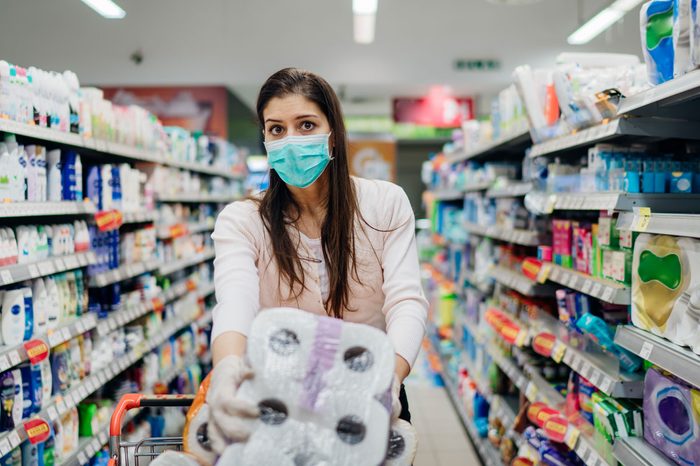
Cover your face and your hands
The CDC recently reversed its stance on face protection during the Covid-19 pandemic. The agency now recommends wearing face coverings in public places where physical distancing can be hard to achieve. “Wear a face covering or make your own mask to protect yourself when shopping,” Radler advises. (Here are some tips on how to make your own face mask.)
As with your hands, gloves may be an option if you have to touch various items at the store, says Robert Glatter, MD, an emergency physician at Lenox Hill Hospital in New York City. “Just make sure you use hand gel to clean the gloves before removing them, and then clean your hands again after you take them off.”
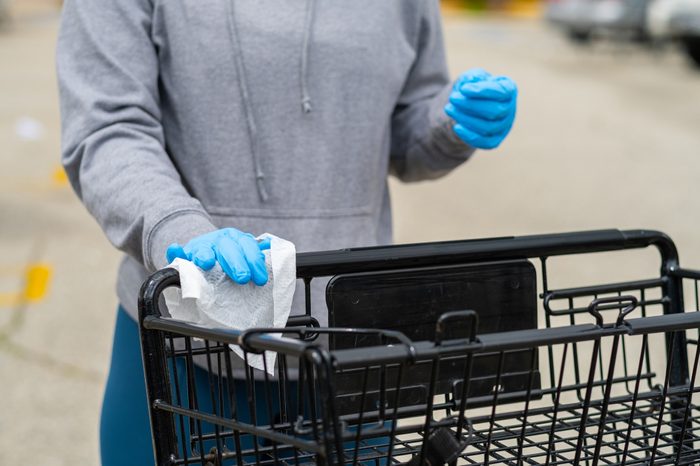
Wipe down shopping cart handles
Coronavirus can remain on hard surfaces such as plastic and stainless steel for up to three days, according to a March 2020 study in The New England Journal of Medicine (NEJM). Therefore, items like shopping cart/basket handles are likely to be among the germiest at the supermarket. Lower your risks by wiping down the shopping cart handle and other shared surfaces with alcohol-based disinfectant wipes, Radler says. Some stores are doing this for customers, but it is better to be safe than sorry, so travel with your own wipes.
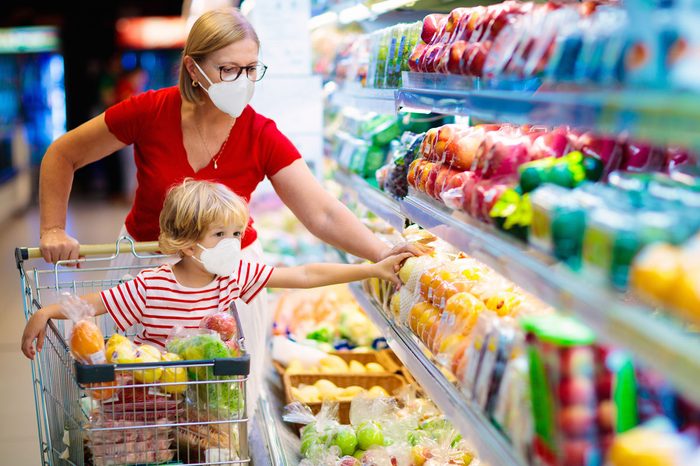
Keep toddlers safe
Any parent knows that taking a toddler to the grocery store can be quite an adventure, and now many have no choice but to do so due to school closings, says Susan Wootton, MD, a pediatric infectious disease specialist with UTHealth and UT Physicians in Houston. “Only one person from the family should be going if at all possible, but if it is not possible then a stroller or baby carrier may help reduce the toddler’s contact with items in the store.” (This is how you can stop the spread of coronavirus at home.)
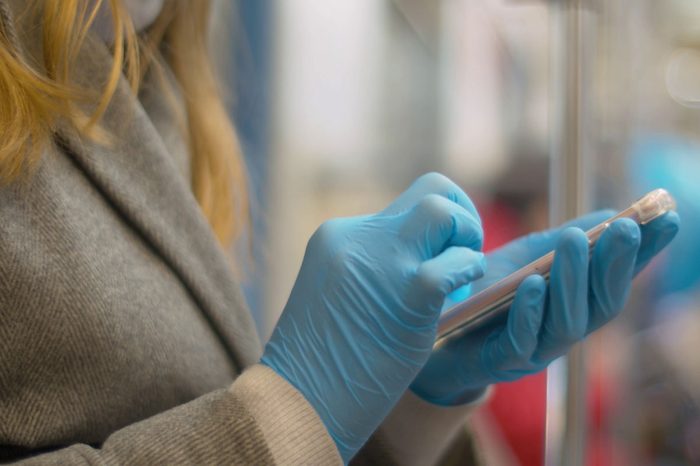
Pay with apps and bag your groceries
Cash is out and payment apps like Apple Pay and Google Pay are in, says Radler. “These two seem like safe options germ wise and hacking wise,” she says. Using apps means there is no touching of cash or engaging with credit card machines which could be contaminated. If you have wipes, consider wiping down the machine before use and also cleaning your hands or using alcohol-based hand sanitizer if you handle money, the CDC advises. It’s also good idea to disinfect your phone.
When it comes to packing up your groceries offer to bag your own. This means one less person will touch them and reduce the potential of infecting your items. It is still important to wash your hands or use hand sanitizer after you bag your groceries.
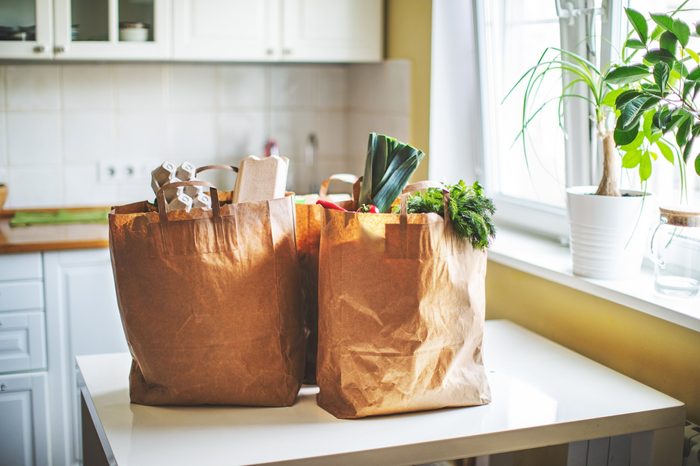
Unpack smartly
The coronavirus can survive on cardboard for up to 24 hours, according to the NEJM study. Wash your hands before and after you unload cardboard delivery boxes, and avoid touching your face in the process. “After you get home, you can leave non-perishable groceries outside for a few hours to reduce the chance of exposure to any viral particles,” Dr. Glatter says.
Another tip: “When you get home from the store, transfer the deli meats, produce and other items from the store’s plastic bags to your own containers or drawers,” Radler says. Make sure to wash all fruits and veggies, she adds.
This remains the best way to protect yourself from SARS-CoV-2, the coronavirus that causes Covid-19, Radler says. Wash your hands thoroughly with soap and water after you return from the market or unpack any items. Oh, and don’t touch your face!
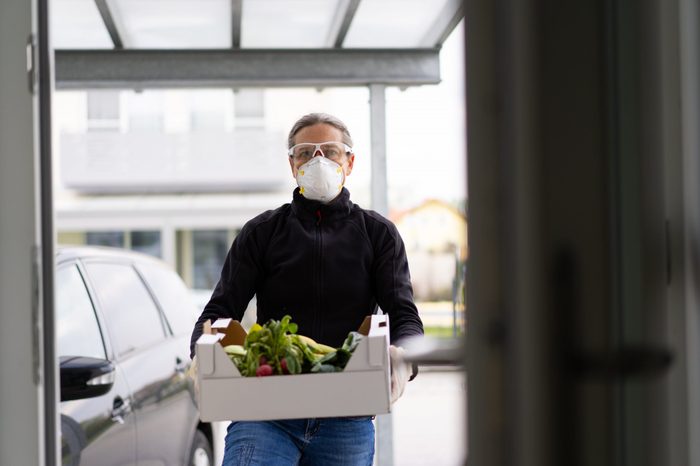
Keep calm
You can shop safely for groceries, Dr. Glatter says. “The risk of spread of SARS-CoV-2 is primarily person to person, via droplets as a result of coughing or sneezing. It’s not via surfaces,” he says. “While the virus can survive on cardboard up to a day, and plastic and stainless steel for up to [three] days, it requires many steps to result in an infection.”
Next, learn how to disinfect everything after you arrive back home from an outing.
